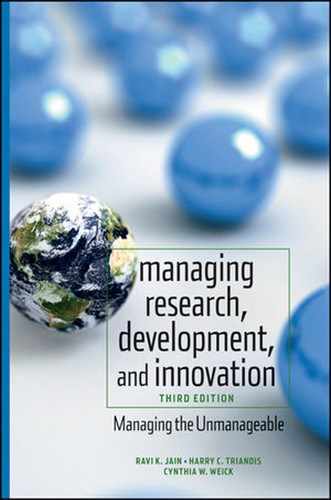Ross, M. H. (1990). Opportunities for maximizing the effectiveness of the administrator/ researcher relationship. Journal of the Society of Research Administrator, 22(1), 1722 (Summer).
Rothwell, R., and W. Zegwell (1981). Industrial Innovation and Public Policy: Preparing for the 1980 and 1990s. Westport, CT: Greenwood.
Rotman, D. (1995). Companies globalize research. Chemical Week, 157(21), 41 (November 29).
Rumelt, R. (1980). The evaluation of business strategy. In H. Mintzberg and J. B. Quinn (Eds.), Readings in the Strategy Process, 3rd ed., 3–10. Englewood Cliffs, NJ: Prentice Hall (1998).
Saari, L. M., and G. P. Latham (1982). Employee reactions to continuous and variable ratio reinforcement schedules involving a monetary incentive. Journal of Applied Psychology, 67, 506–508.
Sakamoto, N. (1982). Polite Fictions: Why Japanese and Americans Seem Rude to Each Other. Tokyo, Japan: Kinseido.
Salter, M. S. (1971). Management appraisal and reward systems. Journal of Business Policy, 1(4), 41–51.
Sawhney, M., R. C. Wolcott, and I. Arroniz (2006). The 12 Different Ways for Companies to Innovate. MIT Sloan Management Review, 75–81 (Spring).
Saxenian, A. (1994). Lessons from Silicon Valley. Technology Review, 97, 42–51 (July).
Scarpello, V., and B. J. Whitten (1991). An exploration of critical personalities in research and development organizations. Journal of High Technology Management Research. 2(2) 151–168.
Schmitt, R. W. (1985). Successful corporate R&D. Harvard Business Review, 63(3), 124–128.
Schneider, B., S. K. Gunnarson, and J. K. Niles (1994). Creating the climate and culture of success. Organizational Dynamics, 23, 17–29.
Schneider, W. (1993). Gelling Smart Quicker: Training More Skills in Less Time. Washington, D.C. Federation of Behavioral, Psychological and Cognitive Sciences.
Schriesheim, J., M. A. Von Glinow, and S. Kerr (1977). Professionals in bureaucracies: A structural alternative. In P. C. Nystrom and W. H. Starbuck (Eds.), Prescriptive Models of Organizations, 55–69. New York: North-Holland.
Schultz-Hardt, S., A. Mojzisch, and S. Vogelgesang, (2008). Dissent as a facilitator: Individual and group level effects on creativity and performance. In C. K. W. De Dreu and M. J. Gelfand (Eds.) The psychology of conflict and conflict management in organizations, 149–178. New York: Lawrence Erlbaum, Associates.
Schumpeter, J. (1934). The Theory of Economic Development: An Inquiry into Profits, Capital, Credit, Interest, and the Business Cycle (translated by Redvers Opie). Cambridge, MA: Harvard University Press.
Science and Engineering Indicators (1993). Washington, D.C.: National Science Board.
Science and Engineering Indicators (1995). Washington, D.C.: National Science Board.
Science and Engineering Indicators (2003). Washington, D.C.: National Science Board.
Science and Engineering Indicators (2006). Washington D.C.: National Science Board.
Science and Engineering Indicators (2008). Washington, D.C.: National Science Board.
